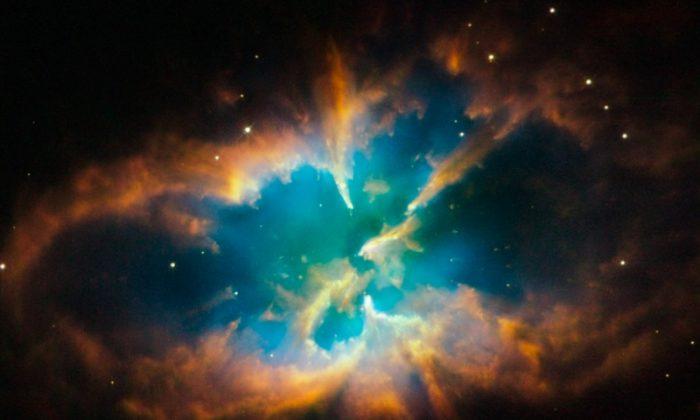Several billion years after it’s born, a star dies. It’s death takes another few billion years. Our middle-aged sun is expected to die in some 5 billion years.
Steps in the Death of Stars About the Size of Our Sun
1. The core runs out of hydrogen fuel, contracts, heats up.
2. The outer layer expands and the star becomes what we call a “red giant.”
3. Heat at the core causes helium to fuse into carbon.
4. The helium is used up, the core cools and expands.
5. Material is ejected, forming the spectacular nebula around the dying star.
6. As the core cools, it becomes a white dwarf, then a black dwarf.
Steps in the Death of Stars Much Larger Than Our Sun
The first three steps are the same as for stars the size of our sun, but then …
4. Carbon is fused into heavier elements, such a oxygen, silicon, iron, and more, because the mass is greater.
5. The core turns to iron and no longer burns.
6. The star collapses and the iron core heats drastically.
7. Protons and electrons merge to form neutrons.
8. This is the most amazing part: Craig Freudenrich, a free-lance science writer, explains in a How Stuff Works article: “In less than a second, the iron core, which is about the size of the Earth, shrinks to a neutron core with a radius of about 6 miles (10 kilometers).”
10. The core eventually explodes under heat and the pressure of collapse, forming a supernova.
11. The remains can form a neutron star or a black hole.






Friends Read Free